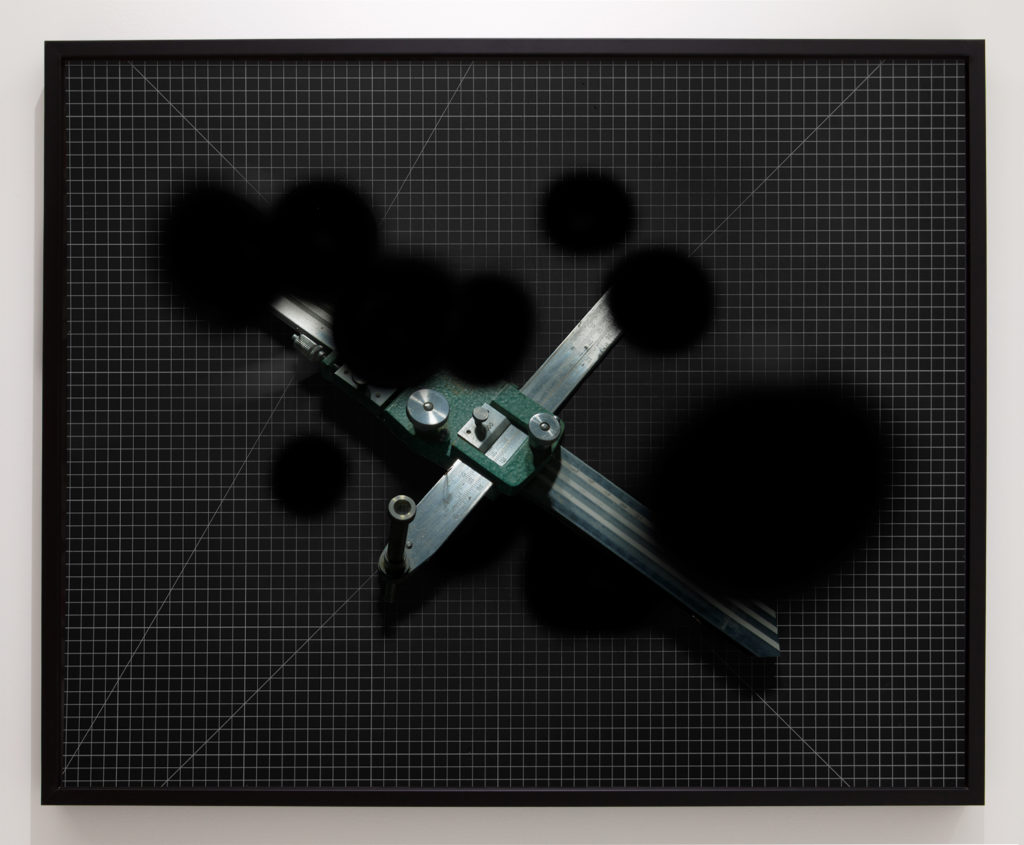by Julien Langevin
Louise Bourgeois, in an interview with Donald Kuspit, once said, “Privilege means that you are a favorite, that what you do is not completely to your credit, not completely due to you, but is a favor conferred upon you. Privilege entitles you when you deserve nothing.” As artists we are privileged: a fact that is easily forgotten or misconstrued. Using artistic privilege to speak about issues that disprivilege marginalized groups is an incredible act of bravery. The point is not to waste, not to step away: to merge two definitions of “political” and “apolitical” art in order to allow both to develop.
The Inaugural Show at Grant Wahlquist Gallery is where the unlikely intersection of identity politics and formalism arouse intimate conversation. Seven artists with exquisite aesthetic identities come together to form an eloquent visual experience while the content of the curated pieces begs critical thought. The relationships of the work form more than just a good group show, they segue from speculation of the relationship of art to contemporary life, social issues, and the accessibility of information.
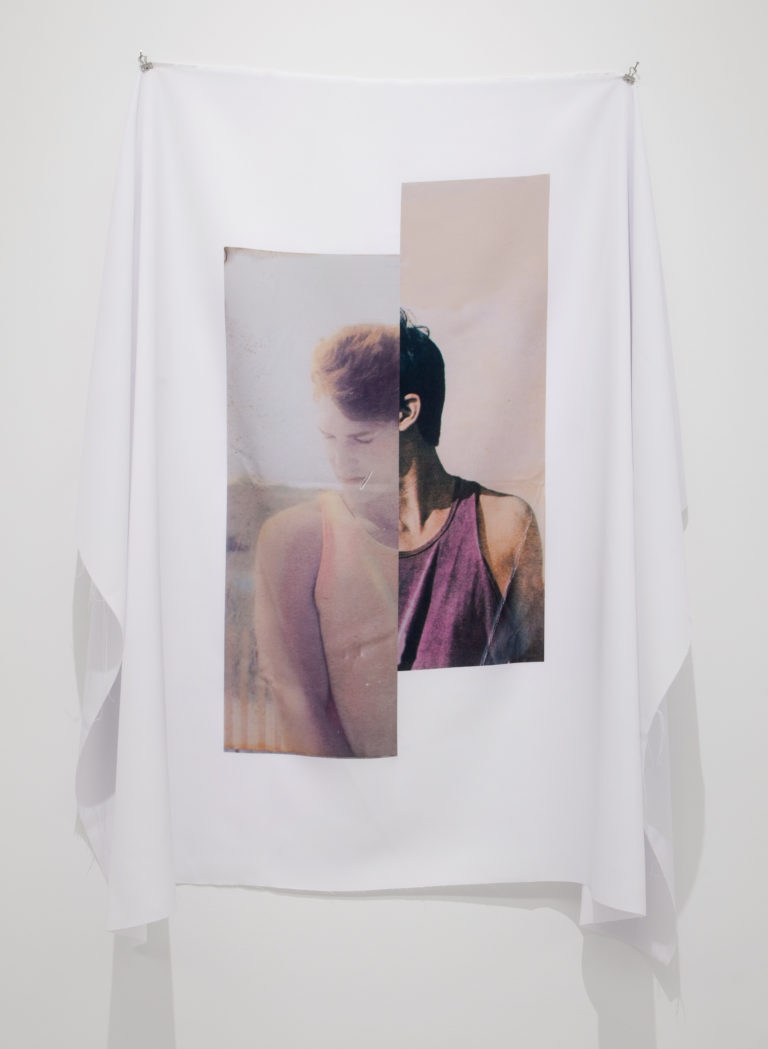
Shows like Grant Wahlquist Gallery’s Inaugural are reminders that these issues are not separate: artwork that is political does not have to be just that, they can still be dynamic formal experiences. A smooth resolution is made when form and content collide and complement. Among the many forms that occupy Grant Wahlquist Gallery, Joe Mama-Nitzberg’s Untitled: A Boy’s Own Story is the most immediately captivating. Untitled discusses the complexity of homosexual identity by presenting a bisected portrait of the model from Edmund White’s novel A Boy’s Own Story. The novel illustrates a semi-autobiographical narration of White’s experiences as a homosexual boy, its cover image portraying another young gay man. The piece performs an intimate relationship to the viewer as it hangs loosely on the gallery wall, almost as if asking a personal testimony of its gazer. The piece discusses erasure in a way that subverts the meaning of the word: it presents its observer with a subject, yet promotes erasure of the subject identity through biographical material alluded to in the piece’s title.
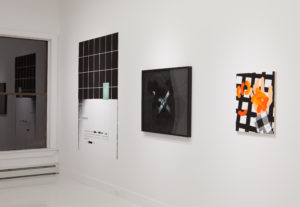
Art in Our Time, another of Mama-Nitzberg’s works, shows a digitally-altered van Vechten photograph. While van Vechten’s work features traditionally formal portraits of figure-centered compositions, the alteration of the photograph here breaks the subject/object relationship. The viewer is now only permitted to see the books photographed on the shelf where van Vechten’s subject would have hovered. The compilation/removal of the subject and objectification of said subject play not only with the complicated issue of data control, but also the influence of information on identity.
Formally, Mama-Nitzberg’s pieces interact beautifully with Amir Zaki and Diana Cherbuliez’s pieces on the opposite wall. Zaki’s Carved and Rocks depict exquisite 3D-rendered forms that appear to be made out of wood, their reflections cascading onto Cherbuliez’s mirrored sculpture on a pedestal to the right. Zaki’s pieces are formulated at the hands of an unknown algorithm within the system used to construct them, implying chance within their creation. Cherbuliez’s piece which contains pieces of mirror housed within a continuously woven wooden box is constantly changing with the movement of the viewer. It distorts varying visual information so that the viewer is constantly reconsidering their relationship to the surrounding artwork, gallery, and Cherbuliez’s piece itself.
Continuing to discuss the congruence of data, Blind Spot 37 by Tad Beck shows the image of a tool that has been situated atop a saturated grid and intentionally doctored. The viewer is not able to tell exactly what the original image of the tool is or what it is supposed to be used for, and comes to find that some of that image is even unbeknownst to Beck. There is a level of censorship here: a push and pull of information. Be the information useful or otherwise, the viewer is still left wondering what is the truth behind the image presented, if there is any at all.
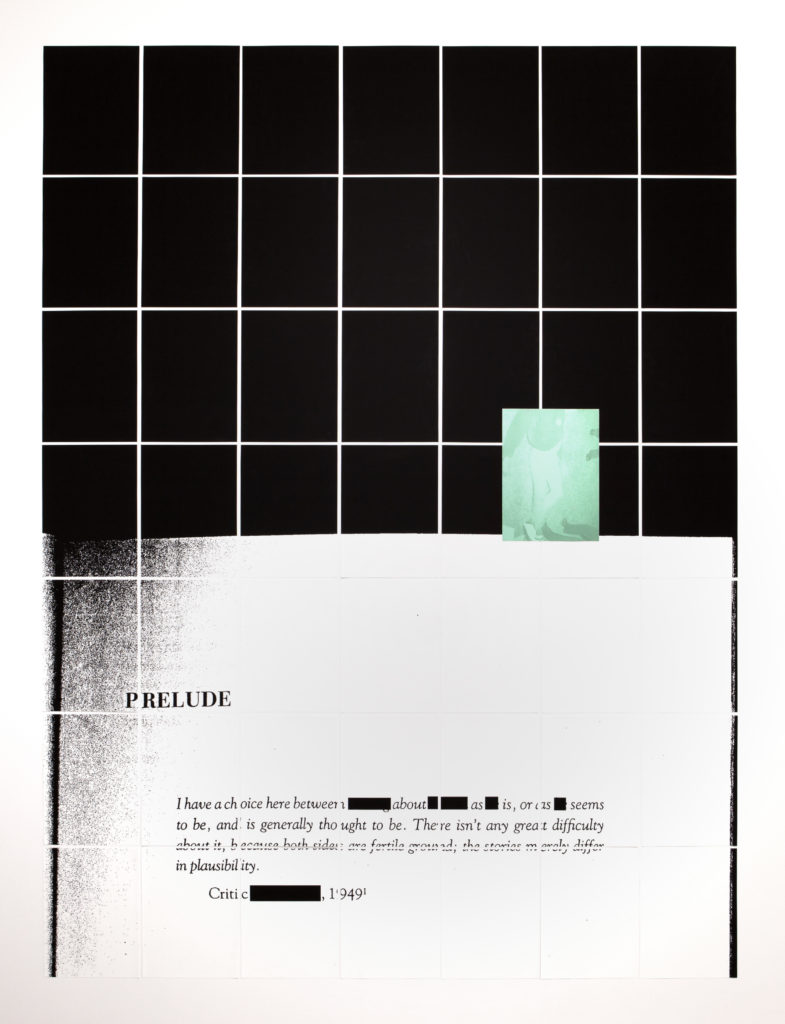
Nyeema Morgan’s Like It Is: Prelude (T.M.), is a large installation of inkjet print paper gridded onto the wall. The lower section of the gridded structure features a piece of the introduction of Thelonious Monk’s biography. Above, an image of Trayvon Martin’s body interrupts the grid, existing separately from the printed paper. The photograph of Martin elicits pangs of grief and anger when recognizing racial injustice and the everyday endangerment of black lives. The biography is edited: choice words are provocatively missing from the statement, shielded from the reader. Perhaps the most jarring piece in the show, Like It Is: Prelude (T.M.) confronts us with the unyielding factor that truth is scarce in our daily lives. Every bit of data we ingest is doctored in order to control our response; art is no different.
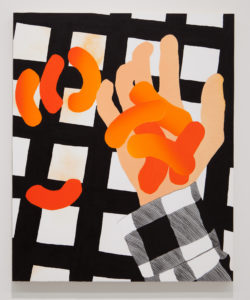
In Search of True Painting and Orange Dust, two paintings by Karen Lederer, remind the viewer of the formal relationships within the show. Lederer pokes fun at traditional Greenbergian modernism by creating formal questions about the authenticity of paint. Combined with contemporary imagery, Lederer’s pieces provide visual flavor for the viewer, their fluorescent orange moments and queer compositions create an interesting formal dialect. The visual and contextual dynamic of Orange Dust and Mama-Nitzberg’s Untitled highlight the strangeness of the entire show.
This is where the tides meet in the Inaugural. Nothing is left to the imagination until everything is: when information is obsolete, or when there is strategic overflow. The conversation that begins in Grant Wahlquist Gallery begs to extend beyond its walls. Using the privilege of art-making to discuss these issues is important in this way: when work is made that elicits a political response, the viewer is then able to consider their own (political) position to the work. When one’s positionality is carefully considered there is room for critical change.
The Inaugural Show runs through July 1, 2017 at Grant Wahlquist Gallery.
Grant Wahlquist Gallery
30 City Center, 2nd Floor, Portland, ME | 207.245.5732
Open Wednesday to Sunday from 11am–6pm, until 8pm on the first Friday of each month during exhibitions, and generously by appointment.
Julien Langevin is a critical artist, activist and writer based in Portland, Maine. His current artistic interests involve the construction of self, gender, and perception. Ongoing political interests involve destroying the kyriarchy.

